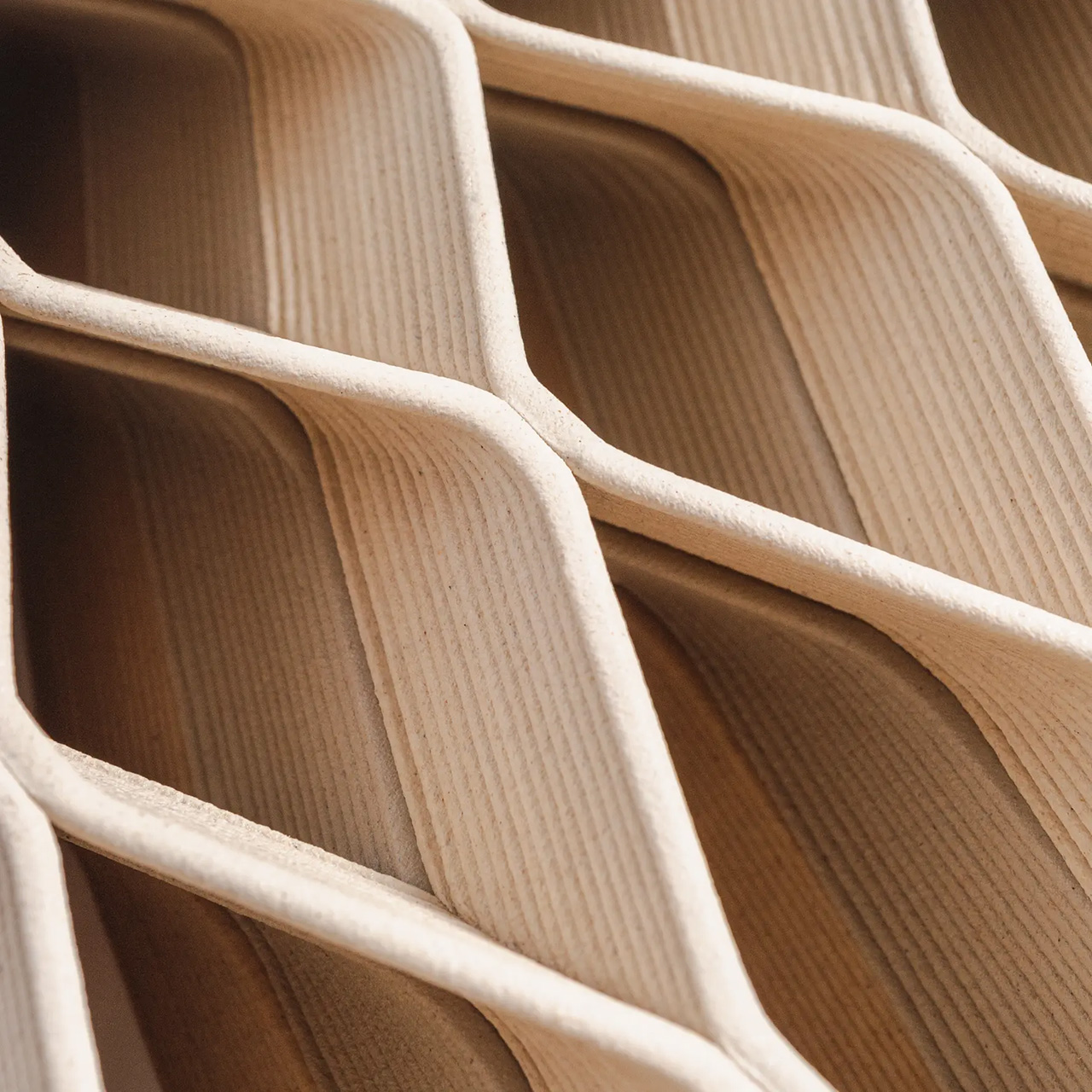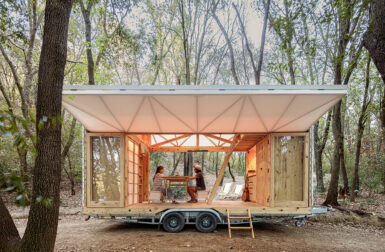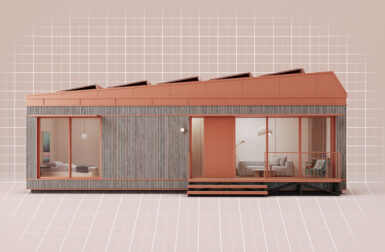
Large scale 3D printing has made significant headway into real world applications. Designers in automotive, event fabrication, architectural planning, and other industries already use the innovative technology part and parcel in development, if not actual manufacturing of products. There are even entire homes constructed layer by layer using a cement mix, resulting in free-form, curvilinear shapes characteristic of the additive process. But what if you want a 3D-printed structure with the warmth, shape, and texture of wood? Aectual, a furniture and finishes manufacturing platform, believes their 3D Printed Wood provides the answer.
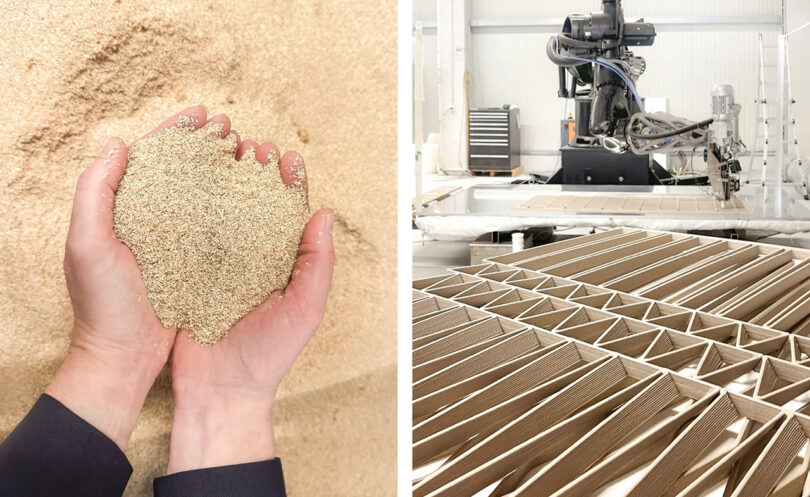
In lieu of thermoplastics, cement or, other traditional 3D-printing materials, Aectual blends wood-waste residue – lignin and cellulose – with vegetable fibers such as flax or hemp to reinforce durability.
A combination of the materials and the 3D-printing process results in textures and hues convincing of real wood. The naturally derived material is printed into sections of screen panels up to 1 x 2 meters in size, interconnecting into larger repeating compositions ideal for interior architectural applications such as wall paneling, room dividers, or window blinds. And because each component is printed to exact digital specs, seams are nearly invisible.
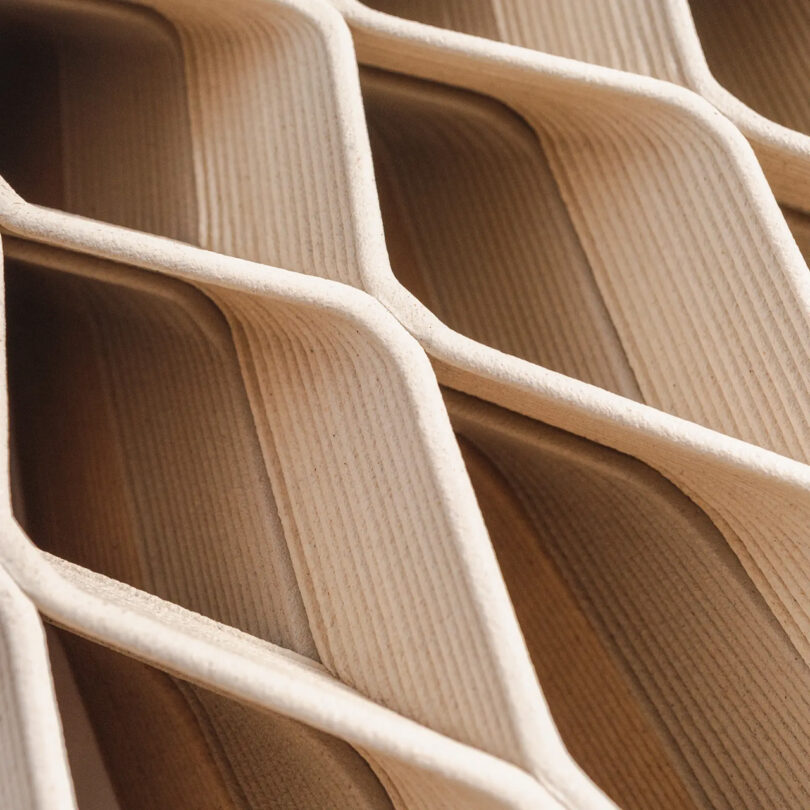
The 3D Printed Wood is not just convincing to the sight and touch, but even emits the fragrance of real wood.
Numerous 3D-printing mediums claim they can be broken down to be reused within a circular lifecycle, but usually with many caveats and specific stipulations. On the other hand, because Aectual’s 3D Printed Wood is primarily made from a wood-waste and vegetable fiber amalgam, it is simple to shred and reprint again for a fully circular lifecycle. Even if not reused, the natural decomposition of wood provides a failsafe for a responsible end of life.

Aectual’s Wood Series is represented by the brand’s Curve, Nazka, and Mesh systems, each featuring their own unique customization features.

The collection also debuts the ‘Stripe Ava’ screen design system, drawing inspiration from mid-century brise soleil patterns, a design inviting horizontal, vertical, and diagonal lines.
Aectual’s Wood Series was just revealed earlier this March at the District fair in the Netherlands, with the company promising additional products from their portfolio utilizing this novel and warmly inviting 3D-printed material.
To learn more about this technology or keep up with developments visit aectual.com.


